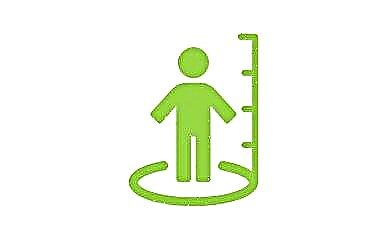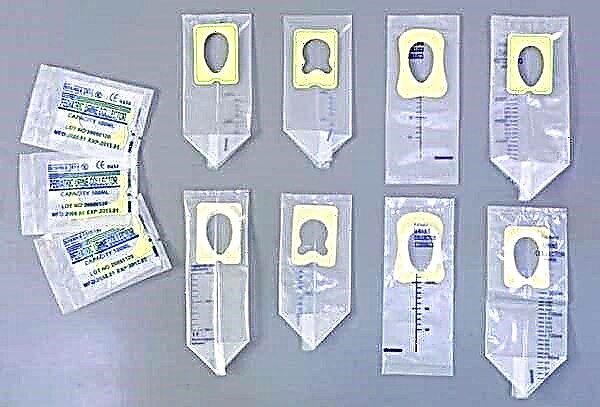The correct formation of vision is of great importance for the harmonious development of a child. Unfortunately, it is not uncommon for serious defects to occur at an early age. Then the diagnosis of abnormalities can be difficult. However, a timely preventive examination with an ophthalmologist will help to identify and solve the problem in time.

Eye pathologies negatively affect the quality of life of children and adults
Vision formation up to a year, at 3, 6 months
Not all parents know what astigmatism in the eyes of a child is. This disease is one of the most common visual pathologies in children. To understand the mechanism of its occurrence, it is necessary to clearly understand the main stages in the development of visual functions in children:
- Neonatal period - reaction to light;
- Central vision is formed at three months;
- At six months, the baby begins to distinguish between faces and geometric shapes;
- Starting from the second year of life, the baby can distinguish drawn images.
At the age of 1.5 years - 2.0 years and older, visual acuity is 0.2-0.3. Then it gradually rises and by school age reaches the norm (if no pathologies are detected).
Attention! A common cause of most eye pathologies is the mother's improper lifestyle during pregnancy (poor nutrition, bad habits), as well as infections in the first trimester.
Reasons for the formation of astigmatism
Astigmatism in a child can form for various reasons, for example:
- Congenital developmental pathologies;
- Prematurity;
- Birth trauma;
- Lack of the right conditions for the formation of visual functions in a child.
When a baby is two to three months old, parents often hang simple brightly colored rattles on the crib. If they are too close to the baby's eyes, strabismus will gradually form in the baby - one of the prerequisites for the development of astigmatizm pathology.
It is known. That visual loads at school age do not affect the development of this pathology.
Attention! Astigmatism is often inherited. Therefore, if someone from close relatives already has such a diagnosis, the child automatically falls into a risk group and requires the close attention of doctors.

Do not neglect a preventive examination by an ophthalmologist
How to identify a defect at home
It is quite difficult to identify pathology at home in a baby of the first year of life. Parents may confuse the symptoms of astigmatism with those of myopia or hyperopia. However, observant parents may be alerted to the following signs of eye problems:
- It is difficult for a kid to focus his gaze on an object;
- The child squints his eyes when watching the toys;
- The infant has difficulty distinguishing between faces;
- When examining objects, the baby tries to turn or raise his head in order to choose the desired angle.
As a rule, pathology is detected during a routine preventive examination by an ophthalmologist. When a baby turns one year old, it must be shown to an optometrist. After checking the baby's eyesight on the devices, the specialist will give further recommendations and explain what to do.
Diagnosis of the disease
Astigmatism per year in a child can be detected during a routine examination by an ophthalmologist in a children's clinic at the place of residence. During the appointment, the doctor will examine the child, listen to complaints (if any) and make a diagnosis. During the diagnosis, the doctor pays attention to the following features of the baby's vision:
- The ability to focus your gaze on an object and hold it for a long time;
- Features of refraction;
- Lens shape;
- Retinal development.
In older children (three to four years old), vision is checked using special tables with letters or symbols. In some cases, a table with rings is used, the child must determine where the ring is torn. If a preschooler (schoolchild) has astigmatism, he sees only the outlines of a letter or symbol, but finds it difficult to name it.

Diagnostics is carried out on an outpatient basis, at an appointment with an ophthalmologist
Symptoms of the disease
Many parents are aware of what a child has astigmatism, but not everyone knows exactly how this disorder manifests itself. There can be many symptoms, the main thing is to be attentive to the well-being of the baby so as not to miss the onset of a dangerous disease. At an early age, pathology is very difficult to identify at home - a baby under three years old does not realize that he sees the world distorted.
At preschool age, parents should be alerted to the following alarming symptoms:
- The child often complains that he has a headache;
- The preschooler gets tired very quickly while reading, writing, watching, watching TV;
- The baby has developed a habit of squinting often in order to better examine the subject;
- The surrounding objects appear to the child as indistinct, blurred.
If alarming symptoms appear, do not hesitate to visit an ophthalmologist. The earlier the specialist diagnoses the pathology, the more favorable the further prognosis will be.
Komarovsky about the disease
The well-known pediatrician Yevgeny Komarovsky claims that early correction of astigmatism is the key to successful treatment. After the diagnosis is made, the ophthalmologist must write the child a prescription for special glasses with cylinder-shaped lenses. They are worn constantly until the problem is fixed. During the period of adaptation to glasses, a preschooler or schoolchild may feel slight dizziness and pain in the eyes, but these symptoms soon disappear, and the quality of vision improves significantly. Therefore, do not be afraid to wear lenses.
Forecast for the future
It is known that the formation of the eye occurs before adulthood, therefore, early correction of any pathology is of great importance. If astigmatism is left untreated, the disease can cause the formation of a "lazy eye" (retinal underdevelopment). At the same time, there are many cases when astigmatism does not manifest itself in childhood, does not affect vision and is found already in an adult. It all depends on the individual characteristics and concomitant diagnoses of each individual patient.

In most cases, the prognosis for the future seems favorable, the main thing is to identify the disease in time and take action
Is it necessary to treat astigmatism
Ophthalmologists unanimously argue that astigmatism at an early age should be corrected with glasses and eye gymnastics. If you leave the pathology unattended, then at school age it will be difficult for a child to cope with a large visual load, this will lead to the formation of concomitant diseases - myopia or hyperopia. Then it will be much more difficult to fix the problem and cure the student. Do not hope that the situation will resolve itself with age. Such cases are very rare. When wearing glasses, you should follow all the recommendations of an ophthalmologist and listen carefully to his explanations.
Modern pediatricians and ophthalmologists claim that in most cases the correction of timely detected astigmatism is successful. Therefore, if a child has been diagnosed with this, parents should not panic. If all the recommendations are followed, it will be easy to restore the baby's eyesight.



